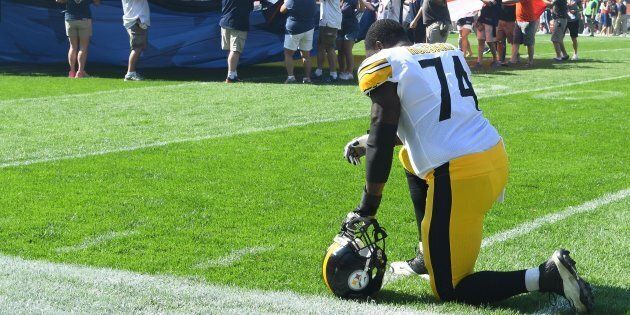
If you are a teacher or a student, you have likely noticed that, while we may be living in Canada, we cannot escape the splashes and spray from our neighbour to the south. Feelings of anger and tension and fear are not new to Canada, but they are coming into our classrooms, amplified by the heated words and controversies that are now daily fare in the United States.
What should teachers do when questions about racism, religious intolerance, prejudice, ugly and threatening speech and other controversial and discomforting issues enter the classroom? Some teachers feel that it is best to brush such things aside or tell students to ask their families for their views and for guidance. Others simply shut the discussion down, saying they don't have time for this, or that this isn't happening in Canada so we are not going to discuss it.
Teachers, take courage. There are many options open to you — and some even comply with Canada's Charter of Rights and Freedoms.
Imagine this: A Canadian student who has been watching U.S. news and sports decides that she is NOT going to stand for the morning's playing of "O Canada." In fact, she is going to silently "take a knee." When her teacher asks her why she is doing this, she expresses her views about anti-Black racism and the dreadful ways in which Indigenous people have been treated in Canada. She is protesting the unfairness she has learned about and she wants Canada to do something about it.

What now? Some teachers would send her to the office, hoping that the disciplinary authorities will deal with the "problem." But others would use this student's behaviour as a "teachable moment." What can a class learn from this? And what risks would the teacher be taking by acknowledging the student's expression?
When we talk about schools as a place where all people are included and treated with respect, we need to include respect for people's views, whether we agree with the views or not — and whichever nonviolent way in which the people involved choose to express their views. We talk about inclusion in the curriculum — and this may not be what some teachers think is meant, but inclusion certainly has a controversial aspect. In a democratic society, we do not get to tell people — including students — which views they are permitted to express, nor the appropriate time and place to non-violently express their views.
Does this mean all views have equal weight and can be expressed in any fashion? Certainly not. A school is a place for learning. People cannot learn when they are fearful or feeling threatened and disrespected. A classroom that is disrupted and taken off-track will be a difficult place to teach and to learn. Most teachers, however, know the difference between disruptive, bullying, hate-filled or abusive speech and political speech. But even the "bad" kinds of speech need direct and thoughtful response, not mere punishment.
It is the teacher's responsibility to help all their students understand that they have the right to freedom of expression.
A teacher may be concerned that "taking a knee" during the national anthem could become a widespread movement. Could the other students, each day, decide that they need to use the morning exercises to protest racism or government inaction on important social issues?
During the war in Vietnam, a group of U.S. students decided to wear black arm bands to school in protest against their government's actions. After they were disciplined, the now-famous Tinker case wound its way to the U.S. Supreme Court. The court said that even minors retain their Constitutional rights: As the court said, "students do not leave their... rights at the schoolhouse gates."
How can teachers teach the importance of our constitutional rights and then at the same time not respect these rights? Short of significant disruption of learning activities, it is the teacher's responsibility to help all their students understand that they have the right to freedom of expression. They must also teach them that with expression comes responsibility.
If a student chooses to single herself out by making a political statement, she can expect that this act will become a topic of discussion. Some fellow students may support her views and still others will disagree. Teachers, rejoice. You have the opportunity of a lifetime to engage your students' critical thinking skills and to make a critical difference for democracy.
Also on HuffPost: